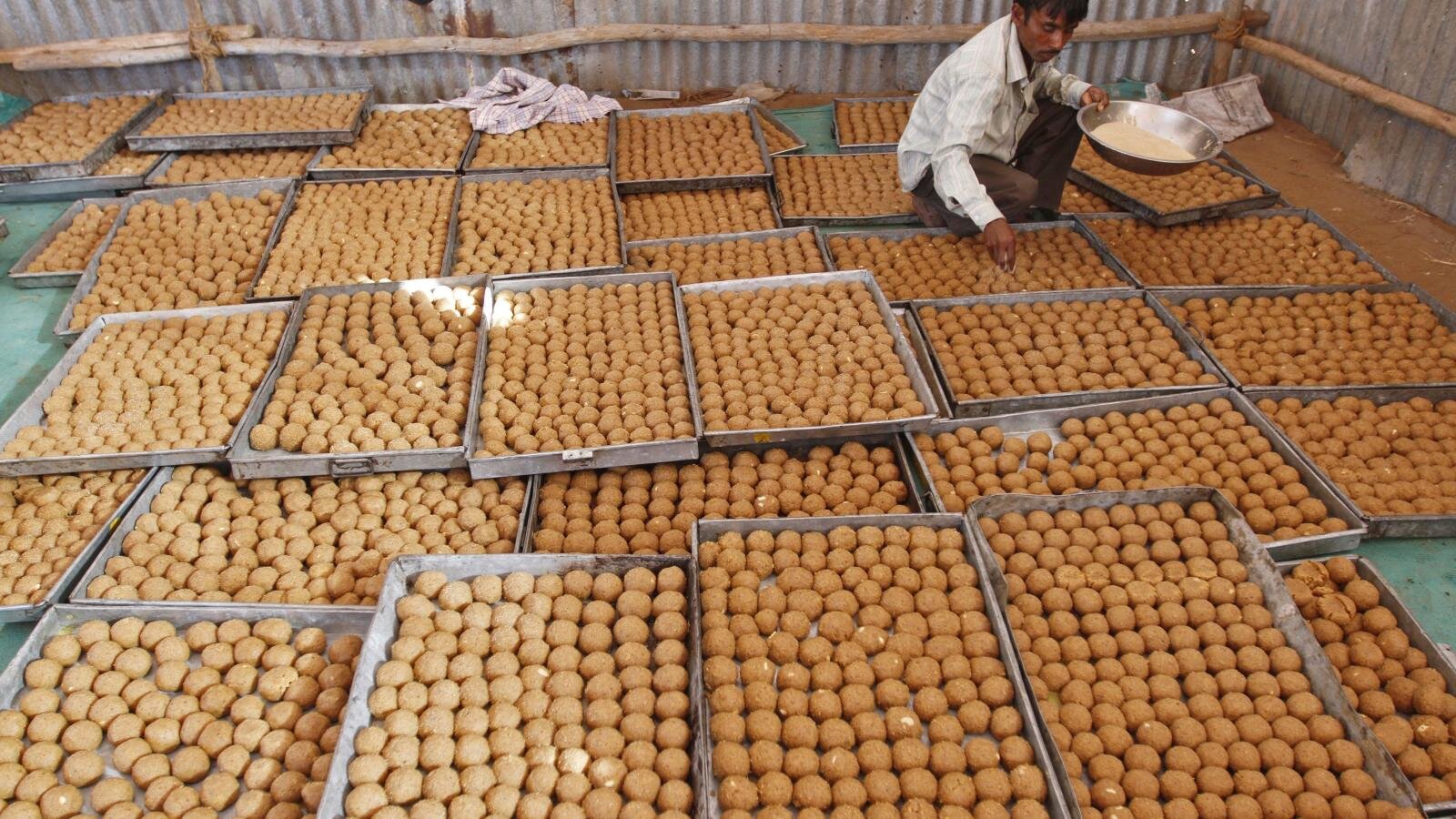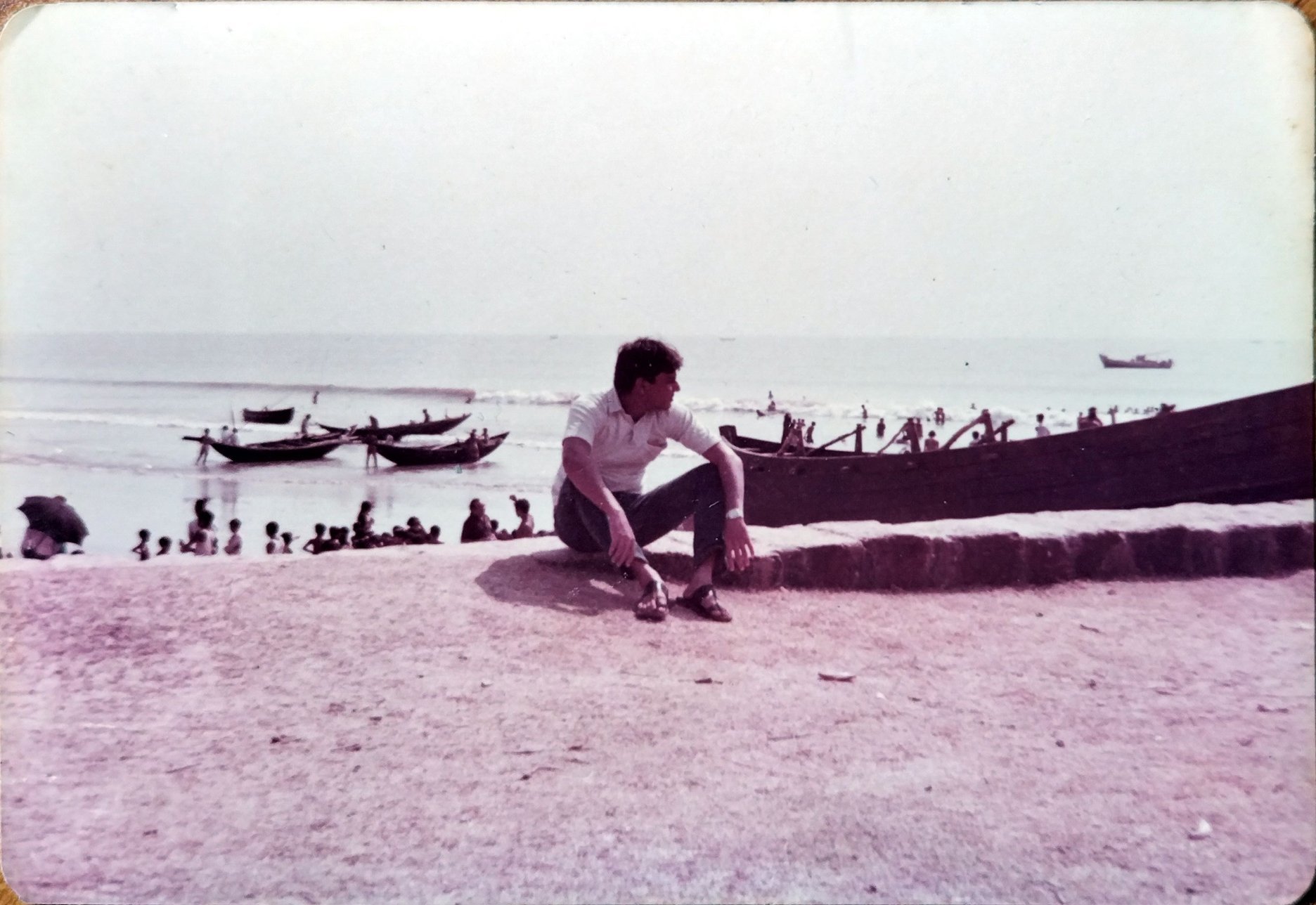From Ladoos to Langar: A Pilgrim's Journey Through India

Temple prasadams form an integral part of the culinary landscape of India. Each temple has its own unique prasadam that is infused with that mysterious flavour, faith. Rashmi Gopal Rao writes about some of the best known prasadams from around the country.
While paying obeisance to the gods would be the most obvious reason to visit a temple, there is no denying the prasadam at the end of a visit is, more often than not, a significant part of the agenda! There is something magical, I would venture to say even heavenly, about temple prasadams.
Derived from the verb sadh, prasadam or prasad as it is commonly known in Hindi, literally translates to favour, grace or offering. Also called Naivedyam or Naivedya in south Indian languages, it is a term intrinsically associated with temples and worship, and refers to the offering of any materials (most often food or water) to a deity. This sacred food, prepared in adherence with strict rules, is first placed in front of the deity to be consumed with holy enjoyment. After this, it is distributed among devotees, who consider it a gracious gift or blessing from the god himself.
One of the most fascinating aspects of the ritual of prasadam is that like us, it is believed that the gods too have their own favourite foods. So, while the Uppaliappan temple in Kumbakonam serves food without salt for Lord Uppliappan (an incarnation of Lord Vishnu), it is soft spongy dosas for Lord Anantha Padmanabha (also believed to be an incarnation of Lord Vishnu), crispy dosas in Madurai's Azhagar Kovil and ladoos for Lord Ganesha. From crisp vadas, tangy puliyodhari, savoury idlis, powdery panchakajjaya, even biryani, temple fare is as varied as it is flavourful. Here are some of the delectable temple offerings in India.
Tirupati Ladoo
Tirupati laddu | Image credit QZ
Considered one of the wealthiest temples in the world, the temple of Lord Balaji in Andhra Pradesh, is famous for more reasons than one. Thousands visit the temple each day queuing up for hours, sometimes even days, to get a brief glimpse of the Lord, an incarnation of Lord Vishnu. Synonymous with the temple is the iconic laddu, a preparation of gram flour, sugar, clarified butter, cashews, raisins and cardamom. Registered as GI-protected in 2014 under the Geographical Indications of Goods (Registration and Protection) Act, 1999, to safeguard its intellectual property, the laddu is prepared within the temple complex by a team of over 200 cooks who make close to 100, 000 laddus a day. No visit to the temple is considered complete without a piece of laddu, sold by the temple authorities at a subsidised rate to pilgrims. Culinary experts will vouch for the fact that no other laddu matches the taste of those made here, and that its uniqueness is often attributed to the holy environment in which it is prepared. “The laddu is not only unique in terms of its taste, (which has remained the same all these years), but the fact that it is tightly packed and does not disintegrate even when broken into pieces,” explains Parimala S A, 71, a home maker from Bengaluru who first sampled the laddu as a 17-year-old when she first visited the temple.
Puliyodhari aka Pulihogara aka Pulihara
The ultimate comfort food and staple of tiffin boxes and train journeys, puliyogare or tamarind rice is a very popular temple offering. A medley of flavours that originate from an interesting mix of spices, the essence of puliyogare is a rich, tangy sauce prepared in advance, then mixed and served with rice. From Melkote to Chennai and Tanjavur to Tirupati, it is one of the most popular foods served in Vaishnava temples of south India. The pulihara, as it is known in Telugu, served in the Narasimha swamy temple in Yadagirigutta, is iconic, and hand-pounded spices lend it a unique, coarse flavour. “Originally known as ‘tintrinni anna’, puliyogare has several ingredients like sesame seeds, red chillies and mustard seeds that are spiritually significant. They are known to ward off evil, and offset any potential problems one may face due to changes in planetary positions, which is why it is offered to God,” says Vasudevbhat, chief priest of the 17th century Kote Venkataramana temple in Bangalore. While most devotees might not be aware of the intricate details, the queues at most temples are definitely longer at prasadam distribution time!
Sakkarai pongal aka sweet pongal
Homemade sakkarai pongal by Skillettoplate
A truly ambrosial potion of rice, jaggery and ghee tempered with nuts, spices and strands of dry coconut, sakkarai pongol is a feast for the senses. The prime ingredients, rice and jaggery, are symbolic of prosperity and are a constant for all auspicious occasions. This is again, a staple offering across temples in south India, including the famous Parathasarathy Temple in Triplicane, Chennai. Replicating this time-tested recipe that includes dollops of ghee and a generous helping of cashews, is a herculean task, according to even the most talented culinary mavericks. “Jaggery is a key ingredient in sweet pongal and most temples use jaggery that is native to the region. Jaggery could be from sugarcane, date palm, palmyra etc. All this adds to the exclusive taste of the pongal which makes it hard to recreate,” explains Chef Varun, Executive Chef at Novotel Hyderabad Airport.
Idlis or Kadabus galore
Kadabus in screw pine cones
Steamed in receptacles of screw pine leaves, the elongated savoury kadabus are considered one of the most auspicious offerings to Lord Ganesha in coastal Karanataka. Made from a fermented mixture of finely ground idli rawa and urad dal, this dish is served as an offering at Ganesha temples in Guddatu and Annegudde, in Udupi district. Traditionally, rice was finely ground and used in place of idli rawa, a practice that dates back to when paddy farmers would pray for bountiful harvests and offer a part of their produce to be cooked and offered to the Lord of Beginnings. The making of the receptacle is quite a painstaking task in that the elongated screw pine leaf is first cleaned of its minute spines, then heated gently on a low flame. This makes the leaf structure flexible. They are then woven into elongated baskets into which the batter is poured and then subsequently steamed. The aroma and flavour of these leaves is quite unique. “It is a truly special offering to Lord Ganapathi, and is a popular seva that is offered by the devotees,” says Anand Urala, manager at Anegudde Sri Vinayaka temple in Kumbashi, about 30 km from Udupi.
Another well-known prasad is the idli offered at the Varadarajaperumal Perumal Temple in Kanchipuram. Also known as Kanchipuram idlis, these delightful steamed dumplings are made from a fermented mixture of raw rice and urad dal to which yogurt seasoned with a mix of peppercorns, ginger, curry leaves and cumin is added. Steamed in manthrai leaves placed in bamboo baskets that are often a foot tall, these baskets take in as much as a kilogram of batter and could take about 3 hours to cook! The woody flavour of the leaf and the taste of the spices, makes this idli a delectable treat!
Karah (Kada) Prasad
A delicious, soft, smooth halwa made from whole wheat flour, karah prasad is the food distributed to all pilgrims at a Gurudwara. Considered to be blessed by the Guru, this prasad holds significance in Sikhism, where it is believed that one should never refuse this prasad. Made from equal portions of wheat flour, sugar and pure ghee, the secret ingredient in this prasad is considered the chanting of ‘waheguru’, an important mantra, which adds spiritual and divine energy to the halwa. “The prasad at the Golden Temple, much like gurdwaras elsewhere, is not just soul food for the faithful, but also a sign of equality and universal brotherhood that the Sikh faith holds in its tenets — it is distributed to all who are present. Another significance attached to this prasad is that no one leaves the Guru’s presence empty-handed. Its preparation is accompanied by the recitation of hymns from the Granth Sahib. Once ready, it is typically covered with a clean cloth and placed beside the Holy Scriptures. It is stirred with a kirpan and apportioned to all devotees after the ardas (requests) have been made to the Lord to accept the prasad,” says Puneetinder Kaur Sidhu, author and travel writer.
Mahaprasad at Jagannath temple, Puri
Arguably one of the most elaborate offerings among Hindu temples is the Mahaprasad at the Jagannath temple in Puri, Odisha. Consisting of a whopping 56 items, the prasad is made daily for an average of 20,000 people and is cooked in strict adherence to holy laws, in earthen pots and over heaths, in the belief that the food turns dramatically flavourful and aromatic once it is offered to Lord Jagannath and Goddess Vimala. Served to all pilgrims irrespective of caste and creed, this prasad is a symbol of equality and the fundamental human bond. The mahaprasad is of two kinds, Sankudi mahaprasad and Sukhila mahaprasad. The former consists of items like rice, dal, vegetables etc, the latter consists of dry sweetmeats including the famous Chena poda.
At the end of the day, temple foods are just not about ingredients, recipe or methodology. Intrinsic to the food is an element of faith, tradition and custom that adds charm, flavour and character to the dish. This is probably the reason why each prasad is unique and, more often than not, never taste the same when made at home.
Banner image credit Jose Garcia Cobo
Rashmi Gopal Rao is a freelance writer and travel-lifestyle blogger from Bangalore. She writes on travel, food and decor. A strong advocate and supporter of responsible and sustainable tourism, she blogs here and tweets at @rashminotes.
ALSO ON THE GOYA JOURNAL











